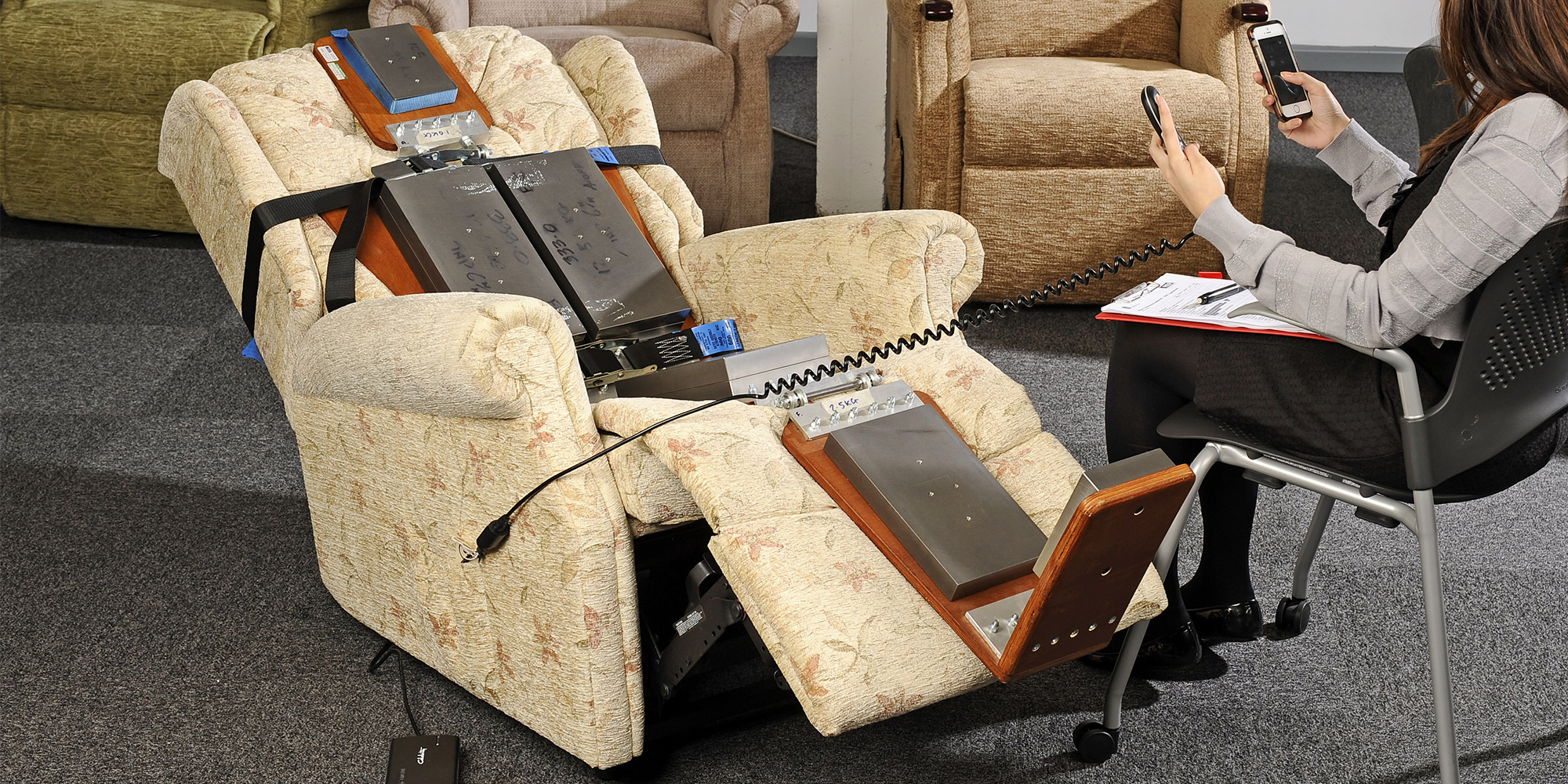JIS L 1096 Upholstery Fabric Strength Testing for Adjustable Recliners
The JIS L 1096 standard is an essential guideline for ensuring that upholstery fabrics used in adjustable recliners meet the required strength and durability standards. This service provides comprehensive testing to evaluate the tensile, tear, and bursting strengths of these fabrics. The test procedure ensures that the materials not only withstand high stress but also maintain their integrity under prolonged use.
Manufacturers rely on this test to confirm that the upholstery fabric will remain secure over time, preventing potential safety hazards such as tearing or disintegration. For quality managers and compliance officers, ensuring adherence to JIS L 1096 is crucial for maintaining a reputable brand image and avoiding product recalls due to defects.
The testing process involves precise measurement of the material’s ability to resist tearing forces. This includes using specialized equipment that can simulate real-world stress conditions. The results provide valuable insights into how well the fabric will perform under various loading scenarios, which is critical for R&D engineers in developing new models and designs. For procurement teams, this service ensures that the materials they select meet the highest standards of quality.
The test setup typically involves securing a specimen cut from the upholstery fabric onto a tensile testing machine. The specimen is then subjected to controlled stretching forces until failure occurs. This allows for accurate measurement of the maximum load before breakage and the energy absorbed during the process. The data collected from these tests forms the basis for quality assurance programs, helping to identify any weaknesses in the design or manufacturing process.
Adherence to JIS L 1096 is particularly important for manufacturers aiming to comply with international standards and regulations. This ensures that products meet safety requirements and are suitable for various environments, including high-traffic areas where durability is key.
The testing procedure also helps in identifying potential issues early on in the product development cycle. By incorporating these tests into their quality control processes, companies can improve product reliability and customer satisfaction. The insights gained from this testing can lead to enhanced design iterations and more robust manufacturing practices.
Quality and Reliability Assurance
The rigorous nature of JIS L 1096 testing ensures that the upholstery fabrics used in adjustable recliners are not only strong but also reliable. This service plays a crucial role in maintaining high-quality standards, which is essential for furniture manufacturers aiming to produce durable products.
Quality assurance through this testing process involves several key steps: specimen preparation, instrumentation setup, and data analysis. Specimens must be cut from the fabric according to precise specifications outlined in JIS L 1096. The instruments used are highly accurate tensile testers capable of applying controlled forces to simulate real-world stress conditions.
Data collected during the tests provides detailed information about the material’s performance under different loading scenarios. This data is crucial for quality control teams as it helps them identify any areas where improvements can be made. For instance, if certain sections of the fabric consistently show lower strength values than others, engineers may need to re-evaluate their design choices or manufacturing processes.
Reliability assurance through this service extends beyond just individual products; it contributes to the overall reputation of the brand by ensuring consistent quality across all units produced. This builds trust among consumers who expect reliable, long-lasting furniture from reputable manufacturers.
In summary, JIS L 1096 upholstery fabric strength testing is an indispensable part of any comprehensive quality assurance program for adjustable recliners. It ensures that the products meet not only the required standards but also exceed them in terms of durability and reliability.
Competitive Advantage and Market Impact
The implementation of JIS L 1096 upholstery fabric strength testing offers furniture manufacturers a significant competitive advantage by enhancing product quality and reliability. In today’s market, where consumer expectations are high and competition fierce, maintaining top-tier standards is paramount.
By adhering to this standard, manufacturers can differentiate themselves from competitors who may not prioritize such rigorous testing processes. This commitment to excellence translates into better-performing products that last longer and provide greater value for money. As a result, consumers are more likely to choose brands known for their reliability and durability.
The use of JIS L 1096 also enhances the reputation of manufacturers among key stakeholders such as suppliers, retailers, and distributors. These partners appreciate working with companies that uphold high-quality standards, ensuring smooth supply chains and efficient distribution networks. This collaborative approach fosters long-term relationships built on trust and mutual respect.
In terms of market impact, complying with JIS L 1096 can open doors to new markets where stringent quality requirements are imposed. It demonstrates a company’s capability to meet these standards, paving the way for international sales opportunities. Moreover, it helps build brand loyalty among existing customers who appreciate consistent product performance.
Overall, incorporating JIS L 1096 upholstery fabric strength testing into one’s operations is a strategic move that contributes significantly to competitive positioning and market success in the furniture industry.
Use Cases and Application Examples
| Use Case | Description |
|---|---|
| Testing Tensile Strength | Determining the maximum load that upholstery fabric can withstand before breaking. This is crucial for ensuring that the material remains secure under various stress conditions. |
| Evaluating Tear Resistance | Assessing how well the fabric resists tearing forces, which helps in preventing potential hazards such as fabric disintegration. |
| Analyzing Bursting Strength | Making sure that the upholstery fabric can withstand high internal pressures without failing. This is especially important for parts of the recliner that experience increased pressure during use. |
- Ensuring compliance with international standards and regulations.
- Enhancing product reliability and customer satisfaction.
- Paving the way for new market opportunities.
- Fostering long-term relationships with suppliers, retailers, and distributors.
In practice, this testing is often used during the design phase to refine materials before mass production begins. It can also be utilized as part of routine quality assurance checks throughout manufacturing processes to ensure consistency in product performance.





